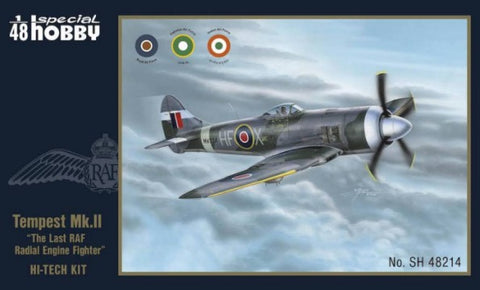
1/48 AF3S Guardian Mad Boom Anti-Submarine USN Warfare Bomber
1/48 AF3S Guardian Mad Boom Anti-Submarine USN Warfare Bomber.
During the 1950s, the AF-2 Guardian anti-submarine aircraft were operating from the US Navy carriers in so-called Hunter-Killer pairs. The development of the Guardian began during WWII, though the original request from the US Navy had been for a torpedo-bomber. At Grumman, this project was known under G-70 designation, while the Navy recognized it as the XTB3F.
The prototype AF-2 (which was a radar-equipped Hunter version) first flew in November 1948, while the AF-2S performed its first flight in January the following year. A year later, the type entered service with the US Navy, later to be joined by a third version, the AF-3S, which was basically a AF-2S with a magnetic anomaly detector fitted. The AF-3s were operated both from land bases and aircraft carriers. During the Korea War, the type was used to defend US Navy vessels in the combat zone.
The Guardian was removed from front line service in 1955, and remained with only the US Naval Reserve units up until 1957.
This model of the final attack version of the Guardian consists of as many as eight styrene runners, one clear sprue, a set of resin parts, and a photo-etched fret. The new AF-3S sprue contains also a new set of mainwheels with the correct number of slots in the hubs and an enlarged stbd wing pod housing more efficient radar to that used in the AF-2S version.
The decal sheet caters to four machines, two of which were painted in blue overall per regulations issued later in the war. The VS-20 machine was operated in 1953, at first from NAS Atsugi in Japan, and later from aircraft carrier USS Bagoeng Strait. The other blue Guardian belonged to VS-27 and flew from CVS-36 USS Antietam in the Mediterranean in 1953. AF-3Ss machines remained in service with reserve units long enough to receive the new Gray-White scheme; the other two Guardians buildable with this kit offer this scheme as worn by NAS Los Alamitos based machines. The scheme is also accompanied by orange fuselage bands which were used to mark training machines.
[Mold Color]: Grey
[Includes]: Clear parts, decals, photo-etched parts, resin parts
We Also Recommend





